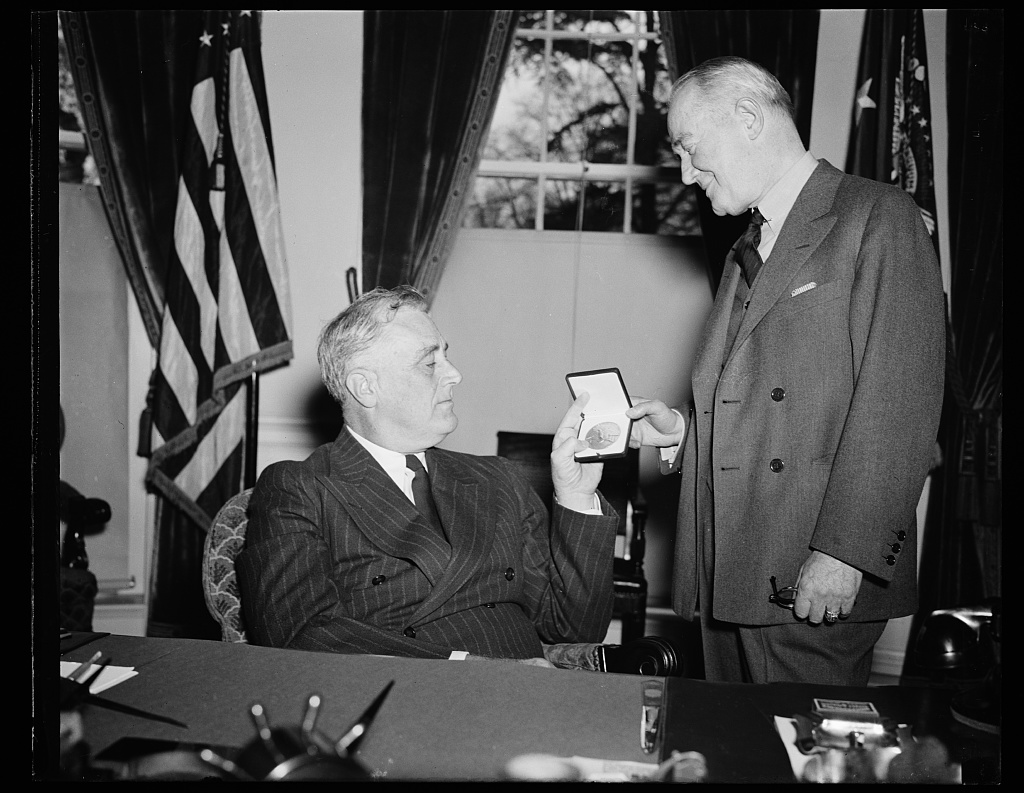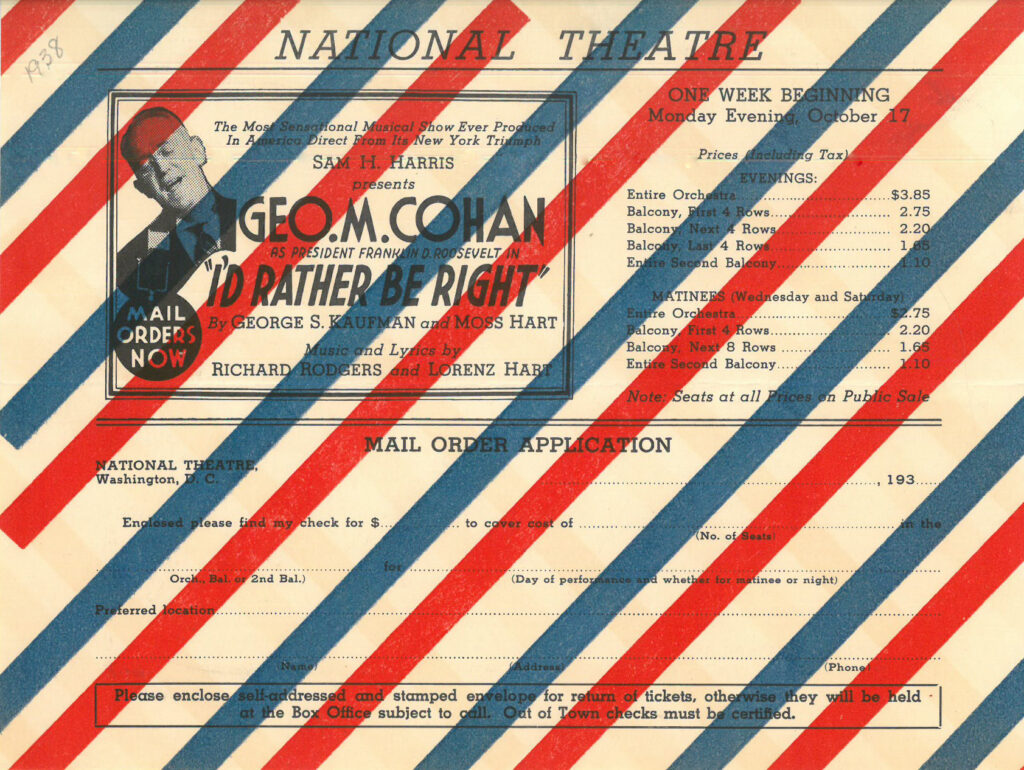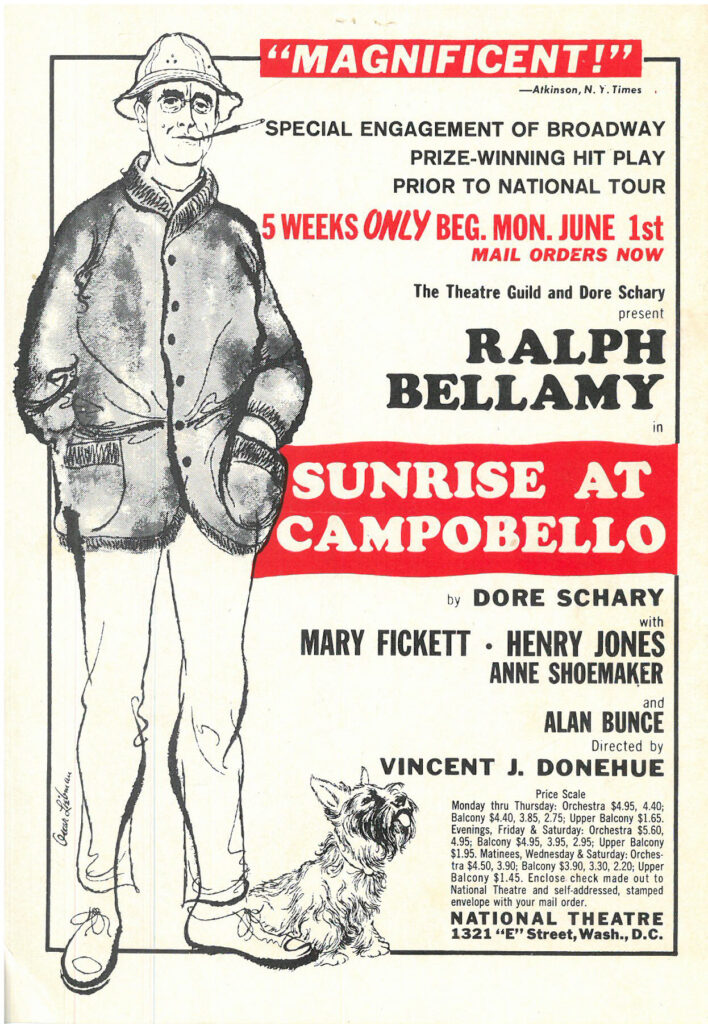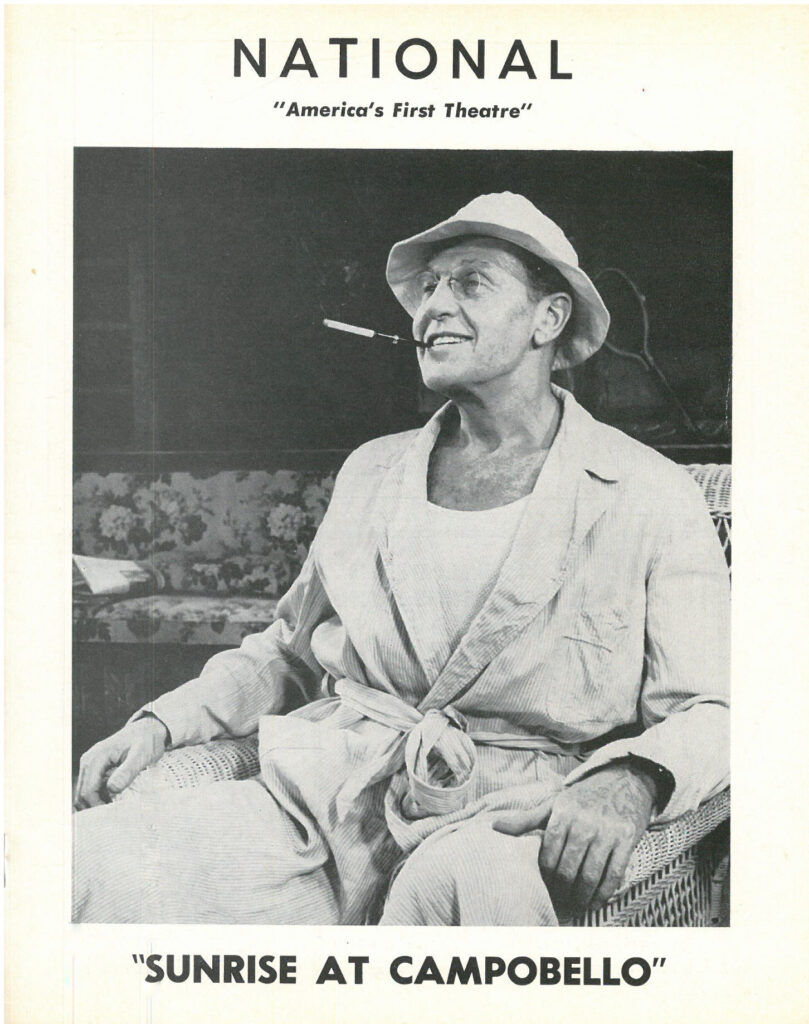By Jared Strange, Director of Education and Community Programs
Published January 17, 2024

The latest tour of Charles Strouse, Martin Charnin, and Thomas Meehan’s musical classic Annie makes its Washington, DC bow at The National Theatre next week. In addition to the show’s charming heroine, audiences will be reacquainted with another iconic figure: President Frankling Delano Roosevelt. The real-life FDR was an ardent theatre-goer and, according to the Washington Post’s Richard Coe, probably went to The National more than any other sitting president. He could often be found alongside his wife Eleanor or son James in a modified box with an exit that opened directly to a back alley. According to Douglas Bennett Lee, Roger L. Meersman, and Donn B. Murphy’s book Stage for a Nation, The National’s staff would escort him through the side door and into the box while the lights were out, ensuring he could access the space in his wheelchair while remaining largely unseen. In addition to seeing many productions here and at other theatres in the city, FDR enjoyed several “command performances” and often hosted company members at the White House. Fittingly, it was under his tenure that the Federal Theatre Project (1935-39), a massive initiative that supported performances all over the country, was founded as a direct result of his signature legislative achievement, the New Deal.
In addition to being a frequent attendee, FDR has also been depicted on The National stage several times, including in previous tours of Annie, which played here in 1978 and again in 2016. Two other high-profile productions stand out. The first, running in 1938, was the Depression-era musical satire I’d Rather Be Right, featuring a book by Moss Hart and George S. Kaufman, lyrics by Lorenz Hart, and music by Richard Rodgers. While their tones differ, both Annie and I’d Rather Be Right depict FDR being inspired to pursue the New Deal after encountering folks who are down on their luck. According to a preview from the Post, the musical was already “acclaimed as such a thorough – even if good-natured – razzing of the New Deal that there [was] little left for the Gridiron club and [opposition] Republicans to do.” Nevertheless, the same announcement touted the “miraculous performance” of George M. Cohan in the role of FDR, “which he [played] without an offensive touch and with great kindliness.” A wise move, considering the president himself was in the audience.

Figure 1: A mail order application for tickets to I’d Rather Be Right, rendered with patriotic blue and red stripes. George M. Cohan’s FDR can be seen in the top left quadrant. Note the price of evening orchestra seats: $3.85, which is equivalent to approximately $84.44 today. Many productions have left such colorful applications and flyers in The National Theatre Archives, but this is the only one we hold from this particular production.
The second is Dore Schary’s Tony-winning drama Sunrise at Campobello, which played here in 1959. Unlike the authors of I’d Rather Be Right, Schary approached his by-then-deceased subject with a reverent eye. Schary’s play locates the action in the years before FDR became president, focusing on his struggles with polio and his eventual ascendance into New York state politics. FDR’s triumph through adversity was the perfect material for a gripping story: writing in a commemorative program, a copy of which is housed at The National Theatre Archives, Schary described the characters who inhabited the future president’s home on Campobello Island as “almost fiction-like in their dramaturgical potential.” The play was a hit on Broadway, and later came to The National for a special engagement prior to a nationwide tour, with original star Ralph Bellamy retaining the lead role. Unsurprisingly, it was a massive hit: “Washington Democrats . . . relived the greatest of their love affairs,” wrote Jay Carmody of The Evening Star, who described the premiere as “more like a political rally than an opening night.”


Figure 2: At left: a flyer advertising Dore Schary’s Sunrise at Campobello in a special engagement at The National Theatre. At right: Star Ralph Bellamy on the cover of the playbill. Fun fact: the flyer on the left bears a message for Scott Kirkpatrick, then manager of The National Theatre, that appears to be from Congressman William B. Widnall, a Republican from New Jersey who served for 24 years. Apparently, he was trying to score tickets to the April 5th production of the musical Bells Are Ringing.
Whether onstage or in print, portrayals of FDR often trade in iconography, even when referencing his early years. The top left flyer for Sunrise at Campobello, for example, depicts a pre-presidential FDR, standing leisurely with his hands in his pockets and a trusty cigarette and holder in his mouth. Next to him appears to be to his dog Meggie, who bears a convenient resemblance to the famous Fala, also a Scottish terrier, who ran around the White House and eventually outlived her master. The same image, overlaid with red and blue stripes (not unlike the mailer for I’d Rather Be Right) adorns the cover of the commemorative program in which Schary divulged his inspiration for the play. On the right is a standard playbill for the engagement at The National, featuring Ralph Bellamy seated in leisurely dress, with the same distinctive cigarette and holder in his mouth. While Carmody described Bellamy’s performance as “portraiture that does not seek exactness,” he and the creative knew what audiences expected when FDR “returned” to the stage.
Interested in learning more about the many presidents who have visited The National Theatre? Check out National Theatre, National Politics, one of our series of Teens Behind the Scenes websites documenting The National’s history.
Sources
Carmody, Jay. “Roosevelts are Back in Hit at National.” The Evening Star, June 2, 1959.
Coe, Richard. “FDR: Theatregoer.” Washington Post, May 31, 1959.
“Famous Satire Bring Cohen to National.” Washington Post, October 13, 1938.
Lee, Douglas Bennett, Roger L. Meersman, and Donn B. Murphy. Stage for a Nation: The National Theatre, 150 Years. Lanham, MD: University Press of America, 1985.
Schary, Dore. “Dramatizing a Thirty-Four Month Ordeal in F.D.R.’s Life.” Sunrise at Campobello commemorative program.